The Future of the Hobby
This Has Been Described as a “Golden Age” for Vintage Vehicles… But Will the Hobby Continue to Shine?
WHAT LIES IN store for today’s collectible vintage vehicles? Did collector cars stop being made sometime in the ’70s, or will modern cars be desirable to collectors 40 or 50 years down the road? And will there be a next generation of hobbyist restorers or could the hobby slowly fade away as times change?
It’s an interesting time to do a little thinking about the future. With election madness, debate on global warming and a war on terrorism, everyone seems to be looking ahead with some trepidation. Doing some research on the future of vintage vehicle collecting and restoring, I found a similar unease within the hobby. Whether in magazine articles or in a series of online dialogues between hobbyists, there is a big question hanging over the hobby about whether or not the love for car collection and restoration will live on once today’s hobbyists are gone.
The Hobby Today
Right now, though, things are good. In terms of both collecting and restoring vintage vehicles, the interest has never been higher. Many Baby Boomers now have the expendable income and, in some cases, they have the extra time necessary to jump into the hobby. They’re getting their hands dirty with the muscle cars from their youth that they had always wanted to own.
This has driven the prices and sales of vintage vehicles, especially muscle cars, to record highs. From 1998 to the present day, Barrett-Jackson’s overall sales from their Scottsdale auctions went from right around $17 million up to sales in excess of $100 million.
Furthermore, involvement in car clubs is high. According to a survey done by Hagerty Insurance Agency, a leader in the vintage vehicle insurance industry, more than 50% of the 10,000 vintage vehicle owners questioned belong to a car club. With such a high interest, clubs have popped up for almost every kind of vintage vehicle conceivable.
Moreover, 67% of surveyed hobbyists said they share the passion they have for vintage vehicles with their family.
All of this shows a growing enthusiasm for collector cars and, as the hobby has grown, it has created room for a healthy variety of collectors and restorers.
On one side, there has been an increase in modifications.
“The car hobby as a whole is a lot more comfortable with modification,” McKeel Hagerty, president of Hagerty Insurance Agency, said. “Purists still exist, but baby boomers are a lot more comfortable with cars that are modified to make them slightly more useable.”
On the other end of the spectrum, “There’s also been a greater move towards retaining signs of age and preservation,” Hagerty said. The idea being that wear and tear and original factory parts show exactly where a vintage vehicle came from and even stock restorations damage the intrinsic historic value of these vehicles.
Nevertheless, these two opposite sides of the hobby seem to co-exist harmoniously. There’s plenty of space within the hobby for all, and in that respect, Hagerty said, “The hobby’s never been healthier.”
For all of these reasons, you might say that we are living in a golden era of vintage vehicle collecting and restoring.
But what changes will occur as we move into the next generation of vintage vehicle restoration?
They Don’t Make ’em Like They Used To
For starters, the cars themselves have changed dramatically. From the three wheeled Benz Patent Motor Car, built as the first automobile in 1886, all the way to today’s SUVs, crossovers, hybrids and electric cars, the automobile has constantly been evolving.
Over the years, the hobby has changed too, welcoming new vehicles into the ranks of collectible vintage machines, even as they often differed fundamentally from their predecessors.
The standard definition of a vintage or antique automobile, as stated by the Antique Automobile Club of America, includes any vehicle that is at least 25 years old, but this fairly vague designation says nothing about whether or not these cars will be collectible.
So, the question is, 25 years from now will anyone admire, let alone collect or restore a 2008 vehicle?
Some would argue that a lot of what makes vintage cars special just isn’t there in today’s cars. Sure, they perform better, are generally more efficient and have many more creature comforts than cars of the past, but very few stand out when they leave the dealer’s showroom. With globalization and increases in production numbers, there’s nothing rare about a Ford Taurus from the past couple of decades.
“There are some unique problems with current era cars being collected and restored in the long term from both a technological and a sociological perspective,” said McKeel Hagerty.
“Will people collect the cars of today? Yes, there are rare cars that will always be collectible such as Ferraris,” Hagerty said, but “I have a hard time wrapping my mind around people getting excited about ’80s cars, I just do.”
On top of this ubiquity of plain cars, another sociological problem with modern cars is the change in mentality about car ownership that has occurred recently. With short-term leasing options and the ability to trade in for a newer car every couple of years, people don’t “own” a car like they used to. Whereas cars in the past became part of the family, there’s little point in naming a car that you’re going to trade in before you even go through a set of tires.
“Short-term leasing options make cars somewhat of a disposable item, which is going to have a negative impact on the future collectibility of anything,” said Hagerty.
Technologically, even if some of today’s modern cars overcome these obstacles in the next 25 years and are considered collectible vintage vehicles, restoration projects could become increasingly difficult.
Hagerty used the modern Porsche twin turbo as an example. Past models of this Porsche have been considered collectibles, which makes it likely that today’s model will be as well, but their advanced technology could give restorers fits.
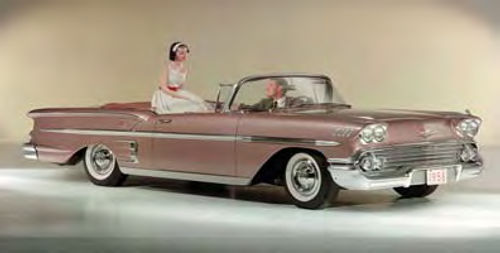
“How many computer-controlled items are in that vehicle? A lot,” said Hagerty, which could make things difficult “if you’re a restorer and not a NASA engineer.”
And then there are the extremely complicated transmissions that go into some of today’s luxury performance vehicles like Ferraris and Lamborghinis. With e-gears, an electronically controlled sequential shifting system replaces the manual gearshift system. “That’s $100,000 going into transmission technology,” Hagerty said. “Can it be restored?”
Other problems exist for non-performance cars from the modern era, like the heavy use of plastics on the interiors. “How will the plastic be restored?” Hagerty posed a potential dilemma. “I don’t think it can be done.”
Future Collectibles
Complex restorations will be a bridge to cross when the hobby gets there, but for now, don’t completely rule out today’s cars. Hagerty himself released a “Hagerty’s Hot List: Top 10 Future Collector Cars,” which was featured in the March issue of Auto Restorer.
“The cars on this list have all the right ingredients to be looked upon by the next generation of enthusiasts as cool cars to collect,” Hagerty said.
Regardless of potential restoration problems, Hagerty predicts that cars like the Cadillac XLR-V Roadster, with its sleek design and V-8 power that give European sports cars a run for their money, and the brand-new, ultra-efficient and uniquely small Smart Car will someday be collectible items.
Roger Falcione, President and Founder of ClassicCars.com, an online vintage vehicle market, thinks that even some of the more lackluster modern cars will become collectible vintage vehicles once they age the proper 25 years or so.
“Ten, 15 years ago, a muscle car wouldn’t turn a head at an auction,” he said. Now they can go for hundreds of thousands of dollars if the car and the market are right.
“People are really passionate about cars,” Falcione continued. “The last job I had was with sport compacts, and I have no doubt that one day we’ll see a Mitsubishi classic car.”
Mike Kunz, manager of the Mercedes Classic Center in Irvine, California, applied the same basic idea to the vintage Mercedes vehicles that his company sells and restores: What makes a car a “classic” is in the eye of the collector.
“It’s a generational issue,” he said. “Mercedes considers cars 15 years out of production to be classics. To me, they don’t look like classic cars, but to a younger generation they might.”
The Next Generation
Another concern enthusiasts have is that there aren’t many members of the younger generations itching to get under the hood and behind the wheel of today’s collector cars.
“Young people aren’t interested in Model Ts,” Hagerty said. “Young people are more into tuning cars.”
Of course there are going to be exceptions to this, but, let’s face it, walking around car auctions, swap meets and vintage car clubs, the crowds are, more often than not, dominated by those who are old enough to have grown up when a lot of the vintage vehicles were new. If this is the case, what will happen to today’s classics when those who appreciate them now are gone?
Though some in the hobby might turn their nose up at a generation more interested in the smaller, cheaper, foreign tuner cars that are often modified to look and drive fast, Hagerty thinks this involvement with cars has the potential to form the next generation of hobbyists.
“The tuner market is a good indication that the younger generation is into cars,” he said. “They’re very aware of the collectible cars today, it’s just not the point in their life where they can afford it, and you sort of have to mature into that interest.”
Hagerty pointed out that this isn’t necessarily a new thing. For whatever reason, younger people from every generation have tended to show more interest in the newer cars of their era. This may explain why one of the biggest draws to the hobby for many car collectors is that it gives them the ability to own a car that was new when they were growing up. Though young people today don’t carry the same nostalgia for the cars of prior generations that older hobbyists do, they may develop it someday.
I talked with David Przybyla, a psychology professor at Denison University, in order to get an outsider’s perspective on the issue. Though he does not feel qualified to comment on the collectibility of certain cars or whether or not vintage cars will be collected in the future, he did support the idea that nostalgia might play a major psychological role in the hobby.
“My suspicion is that, often, a person’s interest in acquiring a particular car has something to do with childhood or adolescent or young adult experiences with the car—maybe in the back seat! And for each new cohort, a different era of car production is probably more of interest,” Przybyla said in an e-mail response.
Therefore, as a younger generation of car enthusiasts grows older, there is more of a chance that they will be drawn back to cars from their youth, which could be good news for today’s cars that don’t have much else going for them.
But does that mean that they will never have any interest in ’50s sedans or other classic vintage vehicles? Hagerty doesn’t think so.
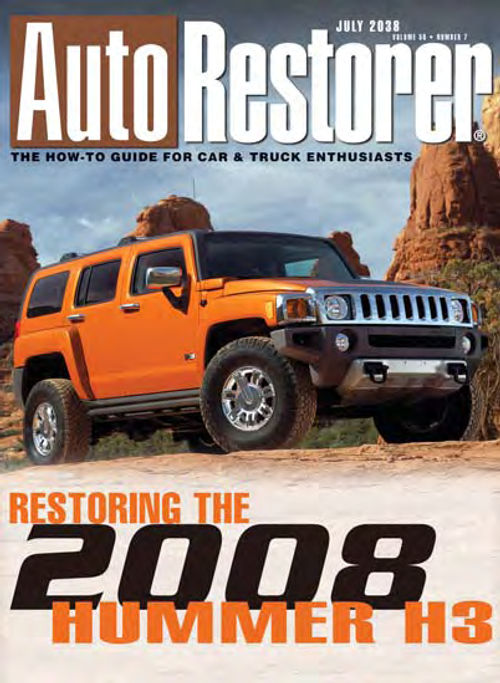
“The generation that drove Model Ts is gone now or very old, but there are still guys interested in them,” he said. “We’re already two or three generations separated from the people who owned some collector cars.”
But the question remains that the further away from the present you go, the harder it may be to garner an interest among young people.
Though Mike Kunz at the Mercedes Classic Center thinks that postwar models have enjoyed a “renewed popularity,” he’s worried about the prewar cars. That’s one of the reasons that Mercedes has placed such an emphasis on their vintage vehicles through their Classic Centers and museum.
“Participating in events, like the concours, raises awareness and excitement about these historic vehicles,” he said.
The Classic Center brings vintage and antique Mercedes over from the Mercedes-Benz museum in Stuttgart, Germany, to participate in concours d’elegance like Pebble Beach. Cars like the 1909 Blitzen Benz, which raced along a Florida beach nearly a century ago at 142 mph, provide the potential for building excitement about antique vehicles.
“Even young people can relate to those numbers,” Kunz said.
If they just gain a little knowledge of them, it’s possible that the next generation of car collectors and restorers may be drawn back even further into cars from the era of their fathers and beyond.
Older Cars and Their Longevity
But even if the next generation of hobbyists discovers an interest in vintage vehicles going as far back as the Model T, how much will they be able to enjoy them in the future?
Already some of the older antique cars have trouble on today’s roads. Ritchie Fliegler, VP of Marketing at Barrett-Jackson, pointed to the Model T as an example. “Other than being hauled to car shows it really cannot be enjoyed on the road—it simply can’t compete with modern day traffic,” he wrote in an e-mail. “It’s temperamental and hard to maintain.”
Ironically, just as maintenance becomes more difficult on newer cars and their complex technological parts, keeping an antique running in the future may be just as difficult. As time continues to add wear and tear to these cars, will anyone know how to fix them when they inevitably break down?
“As some of these mechanics get older, they’re obviously not going to be working forever,” said Mike Kunz, referring to mechanics who fix vintage vehicles today.
And that is why Mercedes has set up internships and scholarship programs with McPherson College. A four-year, Liberal Arts College in McPherson, Kansas, McPherson College offers a degree in Automotive Restoration Technology, a hopeful sign not only for the future maintenance of vintage vehicles, but also in terms of garnering an interest among college-aged students in vintage vehicles and auto restoration.
As a facility that offers everything from minor repairs to full body restorations of vintage Mercedes, the Mercedes-Benz Classic Center is taking advantage of this program to make sure that when the older generation of mechanics retire, there will still be mechanics with the know-how to work on today’s vintage vehicles.
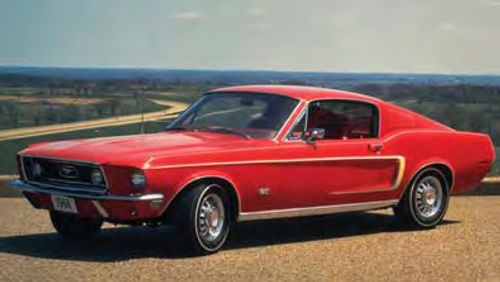
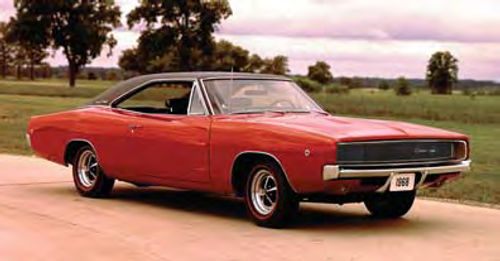
Future Regulations
Global warming and environmental issues will also likely be a thorn in the side of vintage vehicles. With an ongoing debate over the amount of air pollution created by older vehicles along with a spotlight on the environmental impact of hybrid cars and alternative fuels like ethanol, there’s no question that stricter automotive regulations and technological upgrades are on the horizon.
“It’s coming,” said Hagerty, “the question is who’s going to protect the hobby?”
Although the hobby is well represented in Washington by organizations such as the Specialty Equipment Market Association (SEMA), and has been able to avoid certain EPA standards intended for professional car shops, there are a number of issues that could produce unavoidable regulations limiting how and where vintage vehicles can be operated, if at all.
“We’re reaching a time going forward, at least in cities, where people will be charged differently for gas power and possibly required to have some sort of satellite guidance to help with traffic,” Hagerty said.
Whether it’s satellite guidance requirements, taxes, use of alternative fuels that could harm vintage vehicles or even something as drastic as a future prohibition of gasoline-powered vehicles, new regulations could leave vintage vehicles in a predicament—modify to meet modern standards or stay off the roads.
Like the transition from horse drawn carriages to the automobile, we may be approaching a time when only cars with futuristic technology and efficiency are allowed on the roads. If so, hobbyists might have to “stable” their vintage vehicles, only to be driven on selected courses or roads. Owning a pre-1980 daily driver would be a thing of the past.
The other option would be to modify antique cars to meet future regulations.
“I think there will be a technological answer to the fuel problem. The new BMW hydrogen-powered car, I believe, has a fairly standard engine,” Hagerty said referring to the BMW Hydrogen 7, the world’s first production-ready hydrogen car. “I can imagine a hydrogen powered Packard.”
Purists might cry foul, but for those who want to show off their passion for the hobby on modern roads, this might someday be the only option.
“Regardless of the solution, I’m optimistic there will be a long-term batch of vintage vehicles from today,” said Hagerty.
Reason to Be Optimistic
There are sure to be challenges down the road for the vintage vehicle collecting and restoring hobby, but everyone I talked to remains confident that these obstacles are surmountable.
Yes, it is possible that there will be a limited amount of collector cars to come out of the modern era of car building, but even so, once they age these cars will likely find an audience of admirers—if for no other reason than they may be the last line of fully gas-powered vehicles.
Though we may not be able to see anything special in these cookie cutter cars right now, older generations of vintage vehicle enthusiasts probably felt the same way when they saw a muscle car drive by and thought, “Why would anyone want to collect that?”
And look at it this way—if modern cars aren’t collected in great numbers, today’s collectible vintage vehicles would actually benefit.
“With increasing wealth and a finite number of cars, these cars become more valuable over time,” Hagerty said.
The idea that today’s vintage vehicles may be limited or barred from modern roadways is another troubling factor for hobbyists, but even if this becomes a reality in the future, it doesn’t mean that these vintage vehicles will simply disappear.
Horses were once used as a main source of transportation, but when the world switched over to the automobile, horses weren’t taken out back and shot. On the contrary, there remain strong groups of enthusiasts and riders to this day. Likewise, even if they were unable to drive on modern roads, enthusiasts could continue to own and care for vintage vehicles and take them to select tracks for driving.
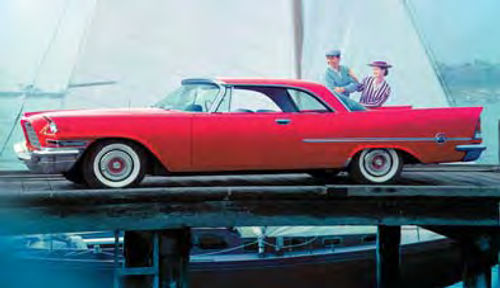
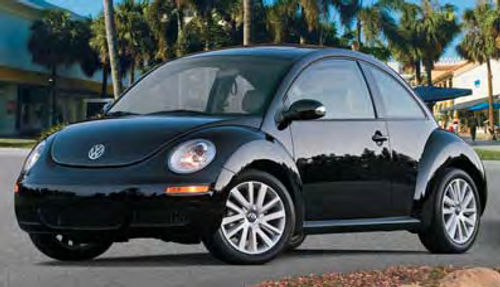
Looking for a Few Good Hobbyists
Finally, a new generation is still needed to take up the reins. Is it possible that the interest in car collecting and restoring will fade with future generations? This seems to be the biggest uncertainty regarding the continuation of the hobby, but the answers I received were unanimously optimistic.
“The real car hobbyists have always been a small percent of the population,” said Hagerty. “As long as we have that two to three percent of the population into cars…and we’re allowed to drive cars, there will always be a hobby.”
Ritchie Fliegler said, “Of course things always evolve, but the passion people feel for cool cars is universal and growing.”
Perhaps in a search to sum up the situation, the old saying “the more things change, the more they stay the same” aptly fits the vintage vehicle hobby. Though things have changed greatly over the years, the love for cars remains and will most likely be passed on for years to come.
“Cars will always be interesting,” said Mike Kunz. “They might look different or run different, but people will always have a strong interest in them.”
“I’ll never be doom and gloom about the current batch of collector cars going long into the future,” said Hagerty. “I’m optimistic, but there are some real challenges.
“Let’s put it this way, the car isn’t going away.”
Resources
Barrett-Jackson
7400 E. Monte Cristo Ave.
Scottsdale, AZ 85260
4809 East Thistle Landing Drive Suite 100
Phoenix, AZ 85044
Hagerty Insurance Agency, Inc.
P.O. Box1303
Traverse City, MI 49685
The Mercedes-Benz Classic Center
9 Whatney
Irvine, CA 92618
















